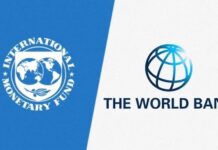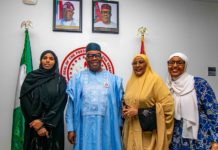Kampala — When I flew to Mogadishu, Somalia’s sandy capital, on December 16, 2017; I was filled with a heady mix of anxiety and excitement because of the image we all have of Somalia; bomb wreckages, lone wolf assassins, and Al Shabaab Muslim militants lurking in the shadows everywhere.
Mogadishu is still reeling from the shock and awe of a truck bomb that killed over 500 people last October. Even though the attack, for which Al Shabaab claimed responsibility, was the deadliest Somalia has seen in decades, the country has long witnessed such acts of terror since Mohamed Siad Barre was ousted from power in 1991. He had been president since he captured power in a coup in 1969.
His ouster led to the birth of Islamic Courts Union (ICU), a ragtag Islamist group which alongside other armed factions in the country battled for the control of the Horn of Africa nation- perpetrating mayhem and anarchy until relative stability was established in the late 2000s, first by the Ugandan army forces -Uganda Peoples Defence Forces (UPDF) and later by joint forces of the African Mission in Somalia (AMISOM) that include UPDF.
On my trip, and after interviews with the President of Somalia, Mohamed Abdullahi Mohamed, some AMISOM commanders, and officials of the African Union (AU) based in Mogadishu, I witnessed not only a sense of accomplishment but a puzzle over the next move. The question of whether UPDF stays is no longer debated. Instead, the question is what happens when it leaves. Part of the reason is that nothing inside Somalia is what it appears to be to those outside the country.
The UPDF, under AMISOM, has accomplished a lot; from pushing Al Shabaab out of Mogadishu, securing the country’s airport and State House, and providing some social services to ordinary Somalis in a country that has barely had a working government for years. Yet commanders on the ground, including Brig. Kayanja Muhanga, who until recently has been the UPDF contingent commander in Somalia, remain apprehensive about the future.
When we sat down with Muhanga in his office at Base Camp, the expansive AMISOM base controlled by UPDF, he was preparing to hand over in three days to Brig. Paul Lokech. So he was in reflective mode and spoke expansively about what has made UPDF so successful in Somalia. He also revealed a few things that most external players do not know about, downplay, or totally miss about Somalia; including that the Muslim fighting group; al Shabaab, might not, in fact, be the enemy of the people one imagines.
The tall, broad shouldered, and thick mustached Muhanga had just completed a year as UPDF contingent commander in December and it was his second tour of duty in Somalia. Having served as commander of Battle Group Eight and deputy contingent commander in 2011/2012, he has garnered a rare understanding of Somalia and Somali clan members now call him ‘Ugasi’ which is Somali for elder. He is sometimes called upon to mediate in conflicts among the clans, even when he is back in Uganda. “Counter insurgency in Somalia is about winning the hearts and minds of the people.
“Any force that comes here needs to first understand the clan dynamics in Somalia,” he says, “You have to be a friend to all clans because there is heavy rivalry between them.”
Clan system
“Once you are in Somalia, you realise Al Shabaab is not exactly the problem,” Muhanga told our group of journalists, “There are times when a clan can unite with Al Shabaab say when a force is simply intent on capturing local territories without anything it is offering to the local population, they will say ‘we have a common enemy.”
The clan system is Somalia’s model of democracy and, depending on whom you speak to, it either works well for the country or harms it. Members of Parliament are elected to represent their clans. The clans are involved in lobbying for positions in government, hold negotiations for economic power, and are routinely defending their territory from intruders- with guns.
Some of the major clans in Somalia include the Hawiye, Dir, Isaaq and the Darood. But even among these clan groupings, they are further divided into sub-clans. Intervening forces in Somalia have to deal with these intra-clan rivalries, among other complexities. For instance, the Hawiye are sub-divided into the Habar Gedir and Abgal.
“Sometimes when you hear an attack in Mogadishu or anywhere in Somalia, it is an attack to send a message to the government for a grievance they are holding; it could be an appointment that was not honoured or even a dispute the clan wants resolved,” Muhanga says.
The difference between Al Shabaab and the clans is that it has an international image, but is it not exactly an enemy of the people, according to various sources in Somalia. UPDF soldiers in Somalia say sometimes it is hard to tell who is a member of Al Shabaab and who is not.
Al Shabaab has its own tax administration system and levies a tax on some roads. It is those who refuse to pay the tax that run into trouble with Al Shabaab, Muhanga says.
But knowing about the clan system is not the same as knowing how to manage it. There are forces; including the United Nations and African Union, that rather than flow with the system, are determined to change it. In fact the UN does not want UPDF to engage in some activities; such as treating of the sick, saying that is strictly the work of humanitarian organisations. But soldiers in Somalia say, with such moves, the UN is complicating the work of rebuilding the country.
“The AU and the UN have set targets for the government of Somalia to start holding elections through universal suffrage for all offices by 2020,” she added, “Voting based on clans cannot go on forever,” says Lydia Wanyoto, the Deputy Special Representative of the Chairperson of the African Union Commission. She told The Independent during a meeting at Aden Abdulle Airport that both the AU and UN want Somalia to move away from a clan-based system of electing leaders. But other voices say Somalis are comfortable with the clan model of democracy and that the Western style democracy of voting may instead cause more instability in the country.
Muhanga agrees that the clan rivalry can be a source of instability and that is why UPDF is involved in mediation of clan conflicts.
He gives the example of how clan rivalry plays out using one of the hotly contested territories in Somalia; the Lower Shabelle region, a large swathe of fertile land with flourishing farms and plantations.
Muhanga says it is the most fertile land in the country and exports fruits to the Middle East. Due to its fertile soils, various Somali clans take part in farming in this area and gun fights occasionally break out because of the economic gain lying therein.
“Because you are thin on the ground, you do not know whom to ally with,” Muhanga explains. AMISOM forces are routinely changed including Uganda which sends battle groups in intervals of about two years. The AMISOM force comprises 22,000 troops where Uganda has 6,000.
In AMISOM’s strategic command structure, Somalia is divided into five sectors among the Troop Contributing Countries (TCCs) and Uganda occupies Sector 1- the most volatile area which contains Mogadishu and surrounding areas including the highly productive Lower Shabelle region. Sector 2 is occupied by Kenya, Ethiopia is in Sector 3, Djibouti is in 4 and Burundi in 5.
UPDF has scored some strategic advantages being the only country that can occupy sector 1. Ethiopia cannot because of its bitter history with Somalia basing on past invasions, Kenya is considered inexperienced militarily and Djibouti being neighbours to Somalia complicates the puzzle because of the shared ethnicity since they are all in the Ogaden region.
Weaknesses and complications
Then there are the Americans. According to Muhanga, the attitudes of Americans and their poor understanding of the country’s internal dynamics have complicated the peacekeeping mission. Due to their enormous resources, he says, American forces are able to conduct missions such as training of local Somali forces which may not work well with AMISOM’s set up.
He describes incidents like when the American forces trained a local Somali squad and, possibly to show off their achievement, asked President, Mohamed Abdullahi to allow them, with back-up from the Somali National Army, to take on what they thought was al Shabaab. Muhanga advised against the venture but he was over-ruled. He was, however, vindicated when the government forces were repulsed and hit terribly by one of the clans whose fighters felt the combination of forces was invading their territory.
“The Somali National Army cannot hold defensive ground,” Muhanga says.
Conversations with other UPDF soldiers in Mogadishu shed light on an army that if left to its own devices would be overrun by the Al Shabaab within no time. The Somali National Army weakness is, arguably, the biggest impediment to the withdrawal of the AMISOM force.
Yet UPDF will not stay in Somalia forever. That is the point Brig. Richard Karemire, the UPDF Spokesperson, made to The Independent after the truck bomb blast in Mogadishu in October last year. He said, however, the UPDF pull-out from Somalia would be gradual.
“This is a calculated handover of different proportions to the Somali military forces,” he said, “It is not a reckless handover.”
Around the same time, a highly placed military source told The Independent in an interview that they had in various meetings advised the AU and UN against the looming exit of UPDF in view of the strategic weaknesses of the Somali Army. “‘Whom are you handing over to?’ we asked them,” the source said, “We instead requested for more troops not an exit.”
He said the local force is not up to the task and AMISOM is doing everything.
“If the exit happens, they will just be handing over to Al Shabaab,” he said adding that the Somali forces need more years of training before they can take over.
The various forces engaged in Somalia have all put up efforts to train the Somali army but since the Americans started their own training, the process has been tricky.
International community
The role of the international community in Somalia is a big issue. As a state under reconstruction both politically and economically, it has become like a piece of pie with various international players trying to either support or control. Away from the Americans, the Middle-East powers are vying for supremacy.
The oil rich House of Saudi is said to be ready to pour investment in Somalia. But there is a problem. Turkey and Qatar; who are on the same side in the Qatar-blockade in the Gulf region, already have massive investments in the country. Turkey has put up an airport terminal, hotels and some educational institutions. The Saudis are now demanding that Somalia kicks out Qatar and Turkey and joins the Saudi-led blockade of Qatar imposed last year. The Saudis are backed by Egypt.
When The Independent asked President Mohamed Abdullahi Mohamed during an interview at State House Somalia on how he manages to keep at bay the various forces trying to dictate the future of his country, he sought to reassert the sovereignty of Somalia.
“As a country that is trying to get back on track, we know various forces may want to intervene but we are always firm and remind them that Somalia is a sovereign country which can manage its own affairs,” he said.
Meanwhile, the UPDF mission in Somalia remains critical to President Yoweri Museveni and the high level deployment there signals his intent. Former AMISOM Force commander, Maj. Gen. Nathan Mugisha, is Deputy Ambassador of Uganda to Somalia; a position he has served in for five years now. Muhanga’s next deployment is at the Second Division of the UPDF which is headquartered in Mbarara, western Uganda. And his successor in Somalia, Brig. Lokech is also serving his second tour of duty. He was the commander, way back when Muhanga was deputy. Clearly, experience is critical in this delicate mission.




